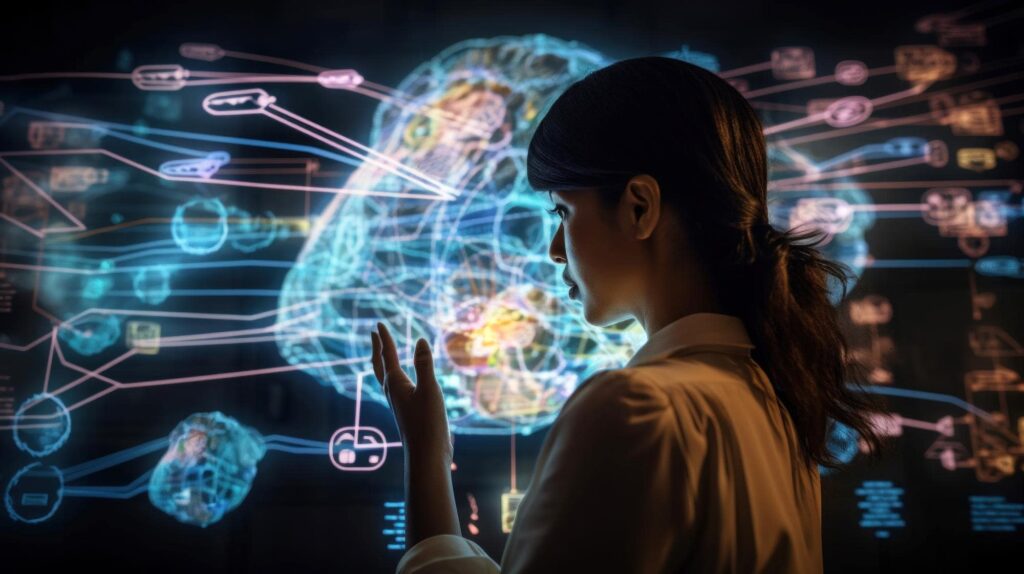Introduction
Artificial Intelligence (AI) and Machine Learning (ML) have rapidly evolved in recent years, revolutionizing various industries and transforming the way we live and work. These technologies, which encompass computer systems that can perform tasks that would typically require human intelligence, hold immense potential for solving complex problems, automating processes, and driving innovation. In this article, we will explore the advancements in AI and ML and their impact on society.

Understanding Artificial Intelligence and Machine Learning
Artificial Intelligence refers to the creation of intelligent machines that can simulate human-like behaviour, reasoning, and decision-making. Machine Learning, a subset of AI, focuses on the development of algorithms and models that enable computer systems to learn from data and improve their performance without explicit programming.
Advancements in AI and ML
1. Deep Learning
Deep Learning, a subfield of ML, has made significant advancements in recent years. It involves training artificial neural networks with multiple layers to recognize patterns and make complex decisions. Deep Learning has achieved remarkable success in various domains, including image and speech recognition, natural language processing, and autonomous vehicles.
2. Natural Language Processing
Natural Language Processing (NLP) enables computers to understand, interpret, and generate human language. Recent advancements in NLP have led to significant improvements in machine translation, sentiment analysis, chatbots, and voice assistants. These technologies have transformed the way we interact with computers and have opened up new possibilities in communication and customer service.
3. Computer Vision
Computer Vision is a field of AI that focuses on enabling computers to understand and interpret visual information from images and videos. Advancements in Computer Vision have resulted in accurate object recognition, facial recognition, image segmentation, and autonomous surveillance systems. These technologies find applications in areas such as autonomous vehicles, healthcare diagnostics, and augmented reality.
4. Reinforcement Learning
Reinforcement Learning is a type of ML that involves training agents to make sequential decisions in an environment to maximize rewards. Recent advancements in Reinforcement Learning have led to significant breakthroughs in areas such as game-playing, robotics, and autonomous systems. For example, AlphaGo, developed by DeepMind, demonstrated remarkable performance in playing the complex game of Go.
5. Explainable AI
Explainable AI (XAI) aims to enhance the transparency and interpretability of AI systems. As AI algorithms become more complex and influential in critical decision-making processes, understanding how and why these algorithms make certain predictions or decisions becomes crucial. Advancements in XAI techniques allow us to gain insights into the inner workings of AI systems, promoting trust, accountability, and ethical use of AI.
FAQs about Advancements in AI and ML
1. What is the difference between AI and ML?
AI is a broader concept that encompasses the creation of intelligent machines, while ML is a subset of AI that focuses on algorithms and models that enable computers to learn from data. ML is a means of achieving AI.
2. What are the ethical considerations in AI and ML?
Ethical considerations in AI and ML include issues related to bias in algorithms, privacy and data security, job displacement, and the impact of autonomous systems on society. Ensuring fairness, accountability, and transparency in AI systems is essential to mitigate these concerns.
3. How are AI and ML used in healthcare?
AI and ML have various applications in healthcare, including medical image analysis, disease diagnosis and prognosis, drug discovery, personalized medicine, and patient monitoring. These technologies have the potential to improve healthcare outcomes, enhance efficiency, and reduce costs.
4. Are there any risks associated with AI and ML?
Some risks associated with AI and ML include the potential for biased or discriminatory algorithms, security vulnerabilities, and the potential for job displacement. It is important to address these risks through responsible development, regulation, and continuous monitoring.
5. Can AI and ML replace human jobs?
While AI and ML have the potential to automate certain tasks and job roles, they are more likely to augment human capabilities rather than replace humans entirely. These technologies can free up human resources to focus on more complex and creative tasks, leading to new job opportunities and roles.
6. What is the future of AI and ML?
The future of AI and ML is promising, with continued advancements expected in various domains. As technology evolves, we can anticipate further breakthroughs in areas such as robotics, autonomous systems, healthcare, smart cities, and personalized experiences. Ethical considerations, regulations, and responsible use will play crucial roles in shaping the future of these technologies.
Conclusion
Advancements in Artificial Intelligence and Machine Learning have ushered in a new era of technological innovation and transformation. Deep Learning, Natural Language Processing, Computer Vision, Reinforcement Learning, and Explainable AI are just a few examples of the remarkable progress in these fields. As AI and ML continue to evolve, they hold immense potential to address complex problems, improve decision-making processes, and enhance various aspects of our lives. It is essential to navigate the ethical implications, ensure responsible development, and embrace these technologies as powerful tools for positive change.
============================================
